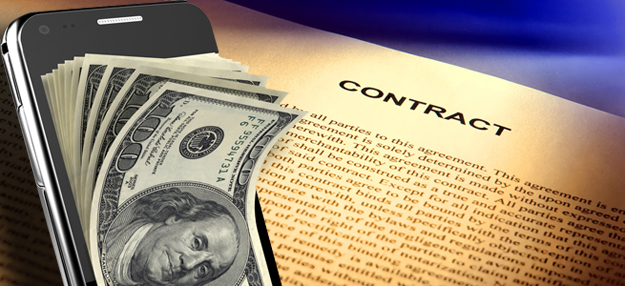 This week is full of magic and wonder; new possibilities and fun; a complete remake of outward appearances.
This week is full of magic and wonder; new possibilities and fun; a complete remake of outward appearances.
Of course, I’m not talking about Halloween. I’m talking about my Mobile Phone Upgrade Day!
It’s been a long two years. I may have once decried the slowing progress of mobile technology, but that was before a new phone was only a few days away from my grasp. Now everything available seems so cool even Han Solo might have it.
North American consumers of all ages look forward to their own Upgrade Days with fervent anticipation, unless they are incredibly patient and mature. But since I don’t know anyone that fits that description, I’m going to generalize.
Notice how I said “North American consumers” back there? That’s because Americans and Canadians are the pretty much the only cell phone consumers who get to experience the wonder that is Upgrade Day.
Don’t worry. This isn’t going to turn into some infomercial about impoverished countries that can’t afford cell phones. It’s actually a cautionary tale about our spending habits, starring me. But first, some market analysis.
As you may know, Americans and Canadians are the only consumers that expect our cell phone companies to subsidize the cost of our handsets. Most consumers in the rest of the world, particularly Europe and Japan, buy their phones outright — what we call “unlocked” phones — and then connect them to whatever mobile carrier they choose under a pre-paid calling and data plan. More than half of European consumers operate this way. In the U.S., only 22 percent of us do. So how much does that $200 iPhone 5 actually cost?

Even the Chief Marketing Officer for T-Mobile, Cole Brodman, thinks we’re stupid.
Why have we chosen to put ourselves under indentured cellular servitude? If you haven’t noticed from the past five years of this nation’s history, a vast amount of Americans are simply incapable of saving money. $200 now, plus $450, plus whatever else the company wants to charge over two years sounds a lot better than $650 when you’re standing in that store.
Why don’t more Americans and Canadians ditch to a pre-paid plan? For most, it’s because most of the phones available for our pre-paid carriers tend to … well, suck. That’s because they have to offer cheaper phones, relatively speaking, to even get a modicum of buyer attention. They simply cannot put a price tag of $650 on a phone, although both Apple and Google are dipping their toes in the water. However, the typical American cell consumer simply wasn’t conditioned to behave that way.
As latecomers to wide cellular adoption (PDF) relative to other industrialized markets like Europe, Americans didn’t view cell phones as the high-tech pieces of hardware that they are. We viewed them as roughly the same as our landline phones, which retailed for about $100. Other countries hated their landlines and wanted to escape them as fast as possible, accepting the price of entry for early adoption. Stateside, infant wireless companies knew they had to price their offerings relative to the competition to spur widespread adoption. They figured out a way to make that happen through subsidies and contracts, even if they were trying to sell something that was more akin to a home computer than a home phone.
So here I sit on Upgrade Day, knowing what a responsible person would do. Buying the new phone outright, even on a credit card, can save me roughly $1,000 over two years if I take it over to Virgin Mobile. But I am actually one of the few people who don’t have a problem with AT&T. I’ve been with them for over ten years. They have LTE in my city and anywhere else I would go. The thought of another two-year shotgun marriage to them doesn’t turn my stomach.
So I turn to the great decider. Not Ronald Reagan; my wife.
She’s not very happy at spending $199, but I drop the “noted technology columnist needs the latest technology to stay relevant” card. With this much resistance to $199, I forget about the pre-paid $650 phone idea altogether, including the $1,000 savings. I guess the American preference for subsidized phones isn’t such a mystery after all.

